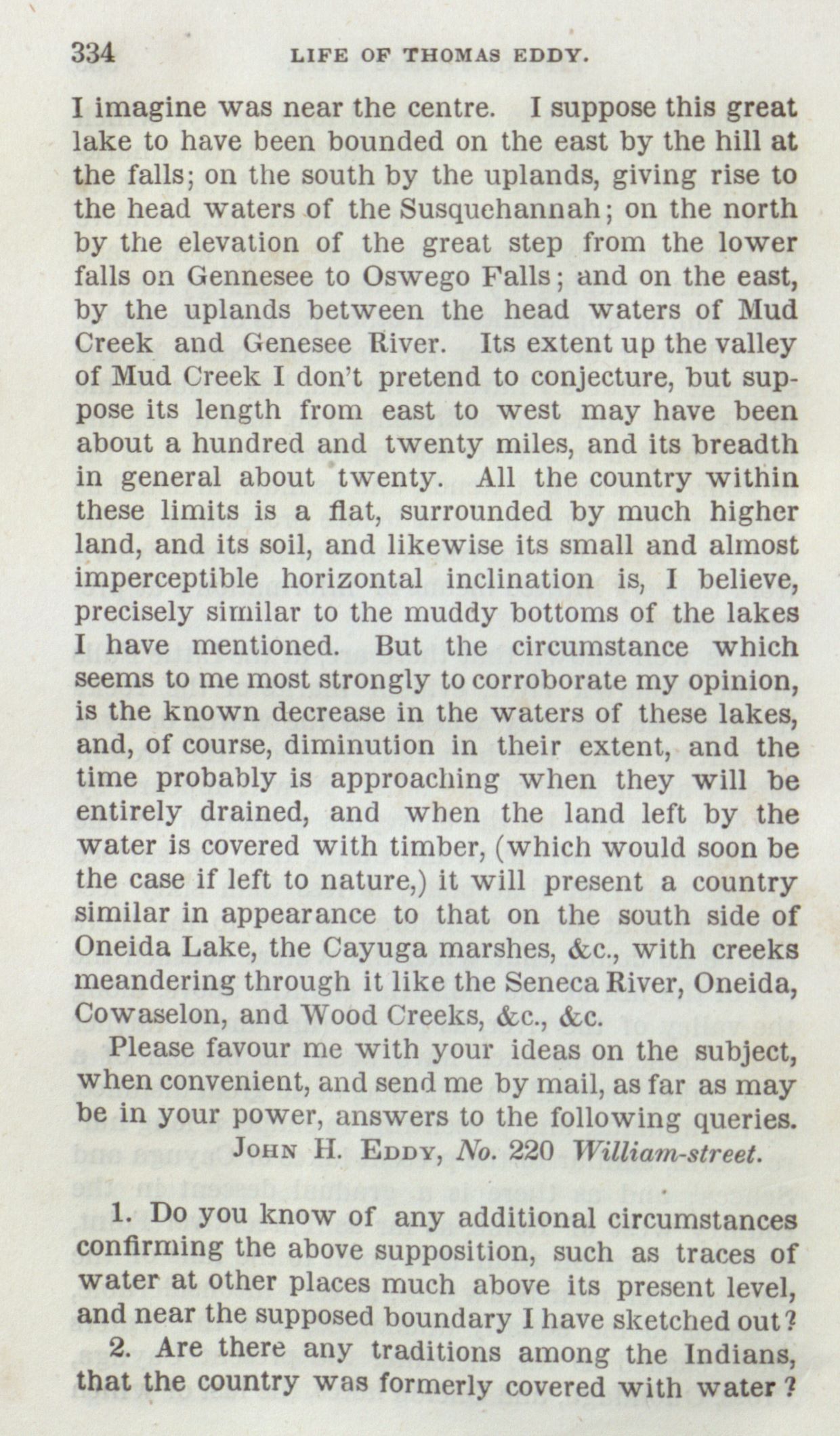I
imagine was near the centre. I suppose this great
lake to
have been bounded on the east by the hill at
the falls; on
the south by the uplands, giving rise to
the head waters of
the Susquehannah; on the
north
by the elevation of the great step from the
lower
falls on Gennesee to
Oswego Falls; and on the
east,
by the uplands between the head waters of Mud
Creek and Genesee River. Its extent up the
valley
of Mud Creek I don't
pretend to conjecture, but sup-
pose its length from east to
west may have been
about a hundred and twenty miles, and its
breadth
in general about twenty. All the country
within
these limits is a flat, surrounded by much
higher
land, and its soil, and likewise its small and
almost
imperceptible horizontal inclination is, I
believe,
precisely similar to the muddy bottoms of the
lakes
I have mentioned. But the circumstance which
seems
to me most strongly to corroborate my opinion,
is the known
decrease in the waters of these lakes,
and, of course,
diminution in their extent, and the
time probably is
approaching when they will be
entirely drained, and when
the land left by the
water is covered with timber, (which
would soon be
the case if left to nature,) it will present a
country
similar in appearance to that on the south side
of
Oneida Lake, the
Cayuga marshes, &c.,
with creeks
meandering through it like the Seneca River, Oneida,
Cowaselon, and Wood
Creeks, &c., &c.
Please favour me with your ideas on the subject,
when
convenient, and send me by mail, as far as may
be in your
power, answers to the following queries.
confirming the above supposition, such as traces of
water at other places much above its present level,
and near the supposed boundary I have sketched out? Are there any traditions among the Indians,
that the country was formerly covered with water?

